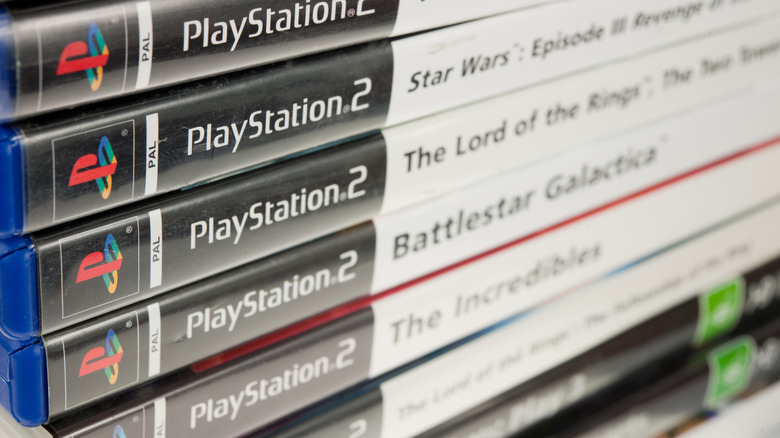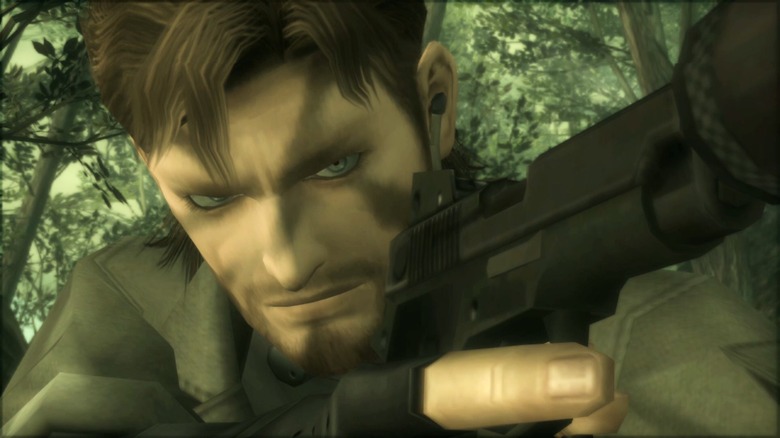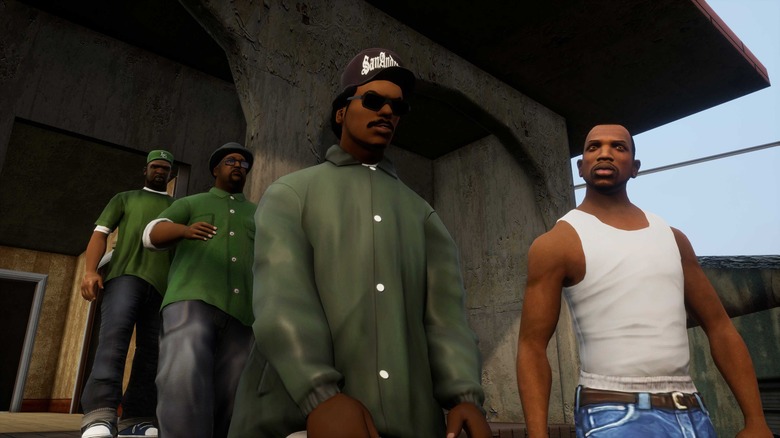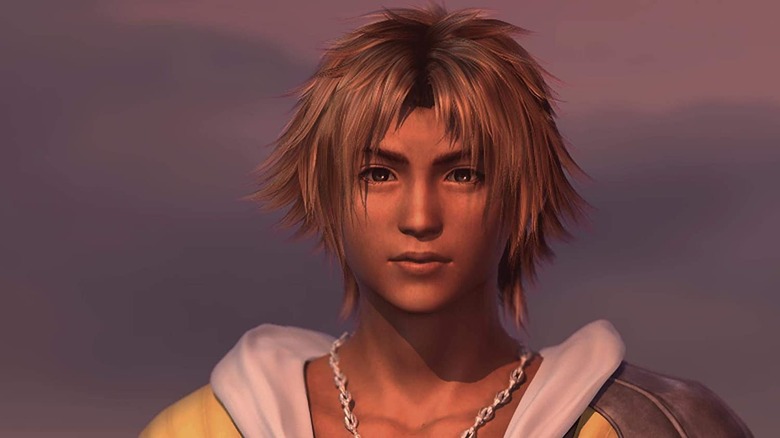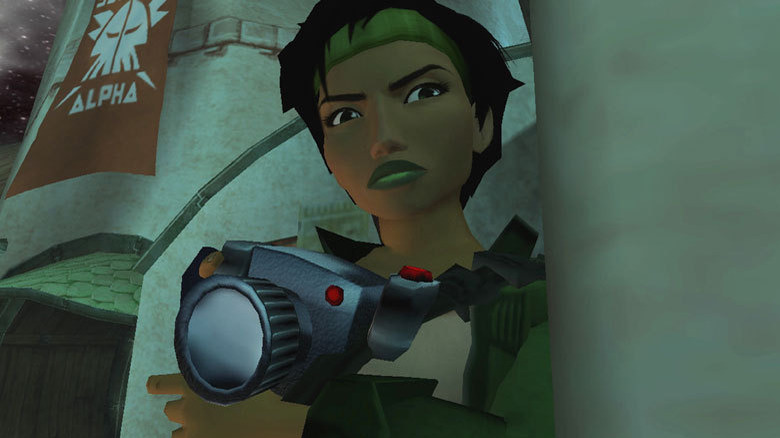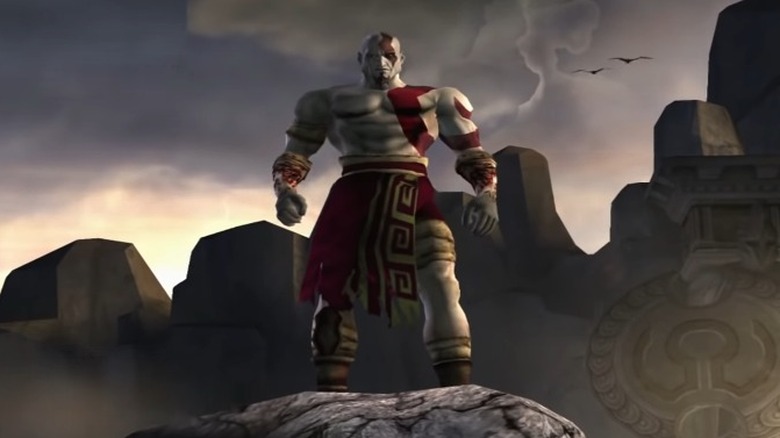5 Of The Best PS2 Games Still Worth Playing If You Haven't
A potent mix of exclusive titles from imaginative first-party studios and healthy third-party relationships offered a strong springboard for success that made the PlayStation 2 the best-selling console of all time. As it matured, the PS2 became more financially accessible while Sony relentlessly blanketed both print and digital media with diverse marketing campaigns that made one thing clear — if you were a gamer, you had to own a PS2.
Its historic run is even more impressive considering it wasn't the most powerful console of its generation, nor the first. Sega's shortlived Dreamcast beat it to store shelves, and from a technical perspective, it even bested the PS2 in some areas despite launching nearly two years sooner. The PS2 also fell short of Nintendo's GameCube and Microsoft's original Xbox in terms of raw performance. However, none of these factors kept it from amassing one of the deepest game libraries in history. More than 4,000 titles were released for the PlayStation 2 from across all genres to deliver some of the most memorable gaming experiences ever.
That's why this list of the best PS2 games still worth playing was challenging to assemble, as there's a seemingly bottomless bucket of quality titles to choose from. Still, the ones highlighted below are truly generation-defining experiences brimming with multifaceted excellence. Don't have a PS2? Don't worry — you can play some via backward compatibility or HD remasters on newer consoles.
Metal Gear Solid 3
"Snake... Snake?! ... SNAAAAAAAAAKE!!!!"
Few other lines in video game history are so simple yet evoke as much nostalgia for one of gaming's most iconic heroes. Even decades later, many gamers consider "Metal Gear Solid 3: Snake Eater" as the stealth action series' height, and it's highly regarded as one of the PlayStation 2's most iconic games.
"Metal Gear Solid 3: Snake Eater" extracts players from the usual dreary industrial compounds the series protagonists frequented and drops them into lush jungles. For the first time, players faced threats beyond gun-toting megalomaniac machinists bent on planetary destruction, as survival now meant battling environmental threats as well.
This entry set a new benchmark for the series and PS2 games in general while introducing several engaging new gameplay mechanics. Chief among those additions was close-quarters combat and a camouflage system that offers real survival benefits for mid-game wardrobe swaps. A deep health management system requires crafting natural remedies from the materials gathered throughout your expedition, giving you an interesting reprieve from fighting bosses and baddies.
Grand Theft Auto: San Andreas
"Grand Theft Auto 3" realized a fully 3D Liberty City and "Grand Theft Auto: Vice City" let us follow Tommy Vercetti's exploits in the Miami-inspired Vice City. While each game in the mainline PS2 trilogy is equally worthy of all-time great nods for transformative open-world sandbox games, "Grand Theft Auto: San Andreas" ultimately trumps the two that came before it.
Main character CJ's timidity contrasts Vercetti's Scarface-like disposition, but gamers loved guiding him through a wholesome (but violent) pursuit of rebuilding his family and cleaning up the Grove Street cul de sac where they resided. The memorable characters still appear in countless memes to this day, and the star-studded cast included names like Samuel L. Jackson.
"Grand Theft Auto: San Andreas," set in a fictitious cluster of cities depicting Los Angeles, San Francisco, and Las Vegas, builds on the winning formula with unmatched diversity in gameplay possibilities. It included RPG elements like a fitness system, allowing CJ to pack on muscle by going to the gym or gain weight by overindulging in restaurants, which affected physical attributes like strength and stamina.
You could also change his haircut, tattoos, and jewelry, in addition to more expansive outfit choices that impacted his reception by various in-game characters. The game was also the first in the series to introduce swimming, romancing, home invasions, and vehicle customization. The wide array of customization options and gameplay possibilities make "Grand Theft Auto: San Andreas" well worth revisiting today.
Final Fantasy X
There are enough games in the "Final Fantasy" lineup to spark contentious debate about which is best, but "Final Fantasy X" deserves recognition as a turning point for the series. It's also one of the PS2's best games and is widely regarded as one of the best RPGs ever. The game took the series to new cinematic heights by offering convincing voice acting for an endearing cast of characters featured in a tear-jerking narrative.
You play primarily as Tidus, a standout athlete in the game's enjoyable side activity, blitzball. While competing, he experiences a world-ending reality after witnessing his home's destruction by a malevolent force called Sin. You'll embark on a quest to learn how to defeat it, meeting helpful new comrades along the way.
"Final Fantasy X" is the PlayStation 2 game that JRPG fans recommend en masse to series and genre newcomers. It faithfully upholds tradition with a turn-based combat system that checks all the boxes for the usual gameplay tropes, such as multi-member battle parties, creature summoning, attack-type bonuses, and character-specific special moves.
In addition, the Sphere system was a unique take on character progression that brought a non-linear upgrade path which opened up new ability possibilities for characters that wouldn't traditionally have them. The unique progression system, a memorable world, and an engaging narrative helped make "Final Fantasy X" a standout title in the franchise and a landmark PS2 game.
Beyond Good and Evil
Compared to the genre-defining experiences on this list, "Beyond Good and Evil" is the dark horse underdog that most people likely missed. Sadly, Ubisoft is dragging its feet on the sequel, and the studio's financial woes may doom its prospects for an eventual release.
Of course, that doesn't mean you shouldn't go back and play the original. "Beyond Good and Evil" is an action-adventure game that was well ahead of its time. You control Jade, a photographer passionate about documenting all aspects of life on a futuristic mining planet called Hillys. The game's geopolitical backdrop involves secret societies and shadow governments, possibly in cahoots with foreign invaders who mean to enslave the planet's inhabitants, many of whom are orphaned.
Jade uses her camera to document planetary life and fauna, earning her credits to use on various equipment and upgrades. The camera also plays an ancillary role as a photojournalistic tool for exposing the corruption tucked beneath the surface of Hillys. She maneuvers stealthily to find vantage points to snap from unseen but can hold her own in hand-to-hand and projectile combat when her cover is blown.
Another character you'll fall in love with is Pey'j, a talking boar that somehow plays uncle to the very-much-human Jade. Pey'j plays an instrumental role in guiding Jade through her new espionage lifestyle, and you'll rely on him for cooperative help in several of the game's memorable missions.
God of War
Kratos wasn't always as powerful as he appeared in the PlayStation 4 reboot "God of War." His origin story begins on the original PlayStation 2 title, which kicked off a whole trilogy of games you should run through for full context of his exploits.
Beyond that, he wasn't always inclined to the Viking lifestyle he lived in Midgard. Kratos' journey in "God of War" begins in the Grecian mythological realm of Olympus. He seeks supernatural power from gods like Zeus, Ares, and Athena to salvage his legacy as one of Sparta's greatest warriors. Kratos would eventually become strong enough to slay gods and titans while imbuing his legendary weapons with new powers while struggling to maintain semblances of his humanity in the wake of gutting consequences.
"God of War" satisfies bloodthirsty gamers who fancy ripping through hordes of enemies like a hot knife through butter. The game features a mix of fast-paced, gory hack-and-slash combat and epic multi-stage boss battles. While the newest "God of War" titles introduced an over-the-shoulder, third-person perspective for appreciating the game's more expansive map, the original games feature environmental linearity viewed from fixed camera angles. However, the view is not static or isometric like it is "Diablo," and you'll experience breaks in the action to enjoy the mystical Olympus from varying angles during platforming sequences.
